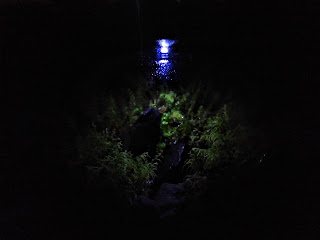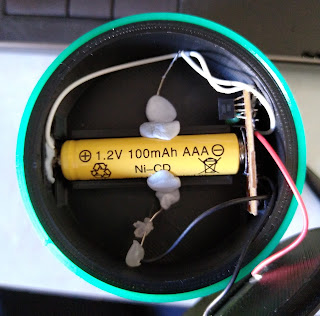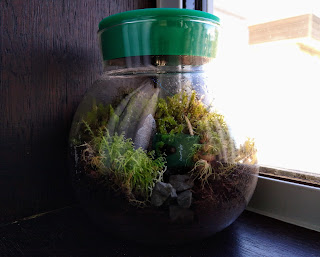Published 2021/04/21
Terrariums are self contained ecosystems, typically filled with plants, mosses, and rocks. They are nice looking pieces of home decor, but, they would be better if we could see them at night. |
| Figure 1 - The completed terrarium solar light at night. |
With this goal in mind I made my first prototype, a battery powered terrarium light based on a $3 terrarium jar and some inexpensive LED's found in my spare electronics box. This design was majorly limited by the battery, even though LED's are incredibly efficient, the CR2032 batteries I was using would be consumed in a matter of days, the LED quickly becoming dim. A switch could've helped here but remembering to turn my terrarium light on and off would quickly become a chore, and I would still be wasting batteries, albeit far slower.
My attention turned to inexpensive solar garden lights. These would solve both my issues of turning the light on and off, and supply power to it. I sourced one for $3 and started modelling a new lid for the jar around the electronics inside (Figure 2).
| Figure 2 - CAD Model of body and sleeve, hole for LED and battery guard rails can be clearly seen. |
The jar lid is composed of three parts, PLA body and lid, and TPU sleeve. Body and lid hold all the electronics from the garden light, and the sleeve fits around them to form a seal between the lid and the jar.
After a few hiccups in printing a final version was manufactured and the electronics adapted from the garden light. It was necessary to remove a switch and move one wire in order to get the electronics to fit in the form factor of the lid, but this went smoothly. Figure 3 shows the electronics successfully installed in the lid.
 | |||
| Figure 3 - Electronics installed in lid. |
Figure 4 and 1 show the final product at day and night respectively.
 |
| Figure 4 - The completed terrarium solar light at day. |